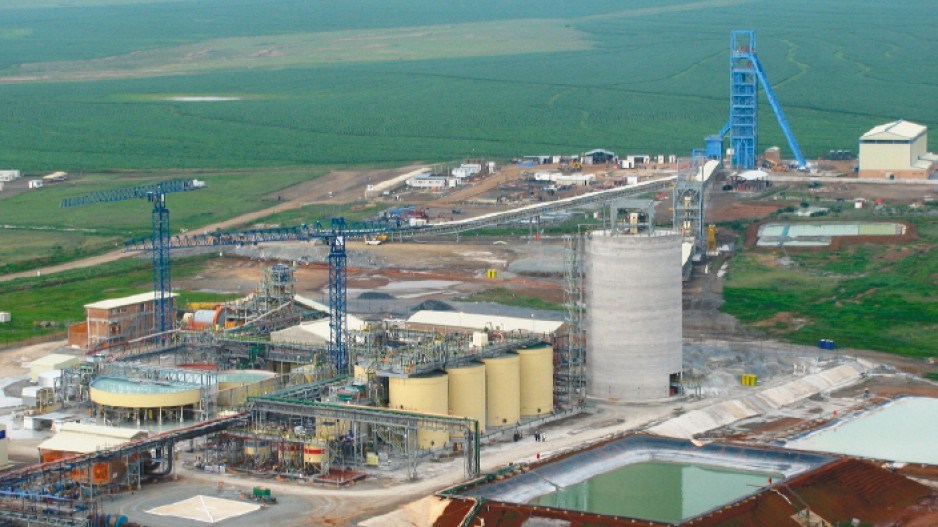A Vancouver junior has found a partial solution to the three scourges afflicting gold mining in South Africa: politics, poor infrastructure and deadly disease.
All can be successfully fought with technology and education, according to Great Basin Gold Ltd. (TSX, NSE AMEX, JSE:GBG). Now it is just finding how to make money doing it.
Great Basin’s Burnstone gold mine, 80 kilometres from Johannesburg, is the first new underground gold mine in South Africa in 30 years. The 30,000-hectare property has reserves of 6.3 million ounces and, at full production, could deliver 240,000 ounces of gold per year.
But what truly sets Burnstone apart: a zero death rate among his workers since production began two years ago. This is shockingly unique in South Africa where an average of one miner is killed every day on the job, and mine workers have the world’s highest rates of tuberculosis (TB) and HIV/AIDS, according to the World Health Organization.
“When we started exploration, we looked at where South African gold mining should be in 10 years. And then we put a plan in place,” said Ferdi Dippenaar, Great Basin’s president and CEO, in an interview with BIV from his Pretoria home. The result, he said, is the safest, most mechanized and lowest-cost producing gold mine in his native country. It also may allow Great Basin to deflect political pressure and lawsuits now afflicting South Africa’s mining industry.
Crack down
In March, South Africa Mineral Resources Minister Susan Shabangu laid down a warning for mining companies: take worker safety seriously or lose their mining licence.
The message could not be a surprise. As well as safety training and equipment, mines must set up strict policies on disease prevention, which are being monitored by Shabangu’s office.
South Africa’s mine workers – who produce half the world’s gold – have three times as many cases of active TB as the general population. And because the human immunodeficiency virus that causes AIDS weakens the immune system, people with it are much more likely to be infected with TB. Thousands of African mine workers have HIV due to close working conditions and the busy brothels that characterize most mining communities.
The government’s tougher stance has also encouraged class-action lawsuits from miners claiming they contracted TB due to the negligence of mine owners. For instance, Anglo American, South Africa’s largest gold miner, is facing claims from 1,200 current and retired mine workers.
For decades, South African gold mines have relied on cheap, poorly educated labour from across Africa. Even today, the average mine worker makes less than the equivalent of $20 per day.
It is different at Great Basin’s Burnstone, where every worker must have at least a Grade 10 education and be able to speak and read English. Workers also receive specific training in safety and in operating the high-tech machines.
Great Basin pays wages above industry norms, but the mechanization allows it to operate Burnstone with just 1,000 workers, compared with 4,000 in a conventional South African gold mine of the same size.
“At full production, we are the lowest-cost gold producer in South Africa,” Dippenaar said, at an estimated cost of around $537 per ounce. Great Basin sells its gold at a contracted price of more than $1,500 per ounce.
Safety measures
No Burnstone worker comes within three metres of the underground mine face, where the majority of fatalities occur. Instead, remote-controlled machines are used to set charges, remove the raw material and even haul it to a central area where it is loaded onto large trucks.
Burnstone’s mine is also equipped with advanced ventilation systems and breathing equipment to control the dust often related to TB.
Burnstone is fortunately close to urban centres, allowing all workers to commute from home. This reduces exposure to brothels and other dangers of traditional mining camps. It also allows Great Basin to keep on top of its community outreach safety program that focuses on sanitation and disease prevention.
Great Basin, which also owns the Hollister gold property in Nevada, has a market capitalization of just $362 million. While Burnstone may be a model of South Africa’s future, Dippenaar admits the young mine “is not making money yet” and it will need more capital to reach its full capacity.
In March, a syndicate of underwriters, led by RBC Capital Markets, invested $50 million into Great Basin, all of which is to be used to ramp up Burnstone production.
Great Basin’s share price was $0.67 as of press time, down from $2.66 at this time last year. •




